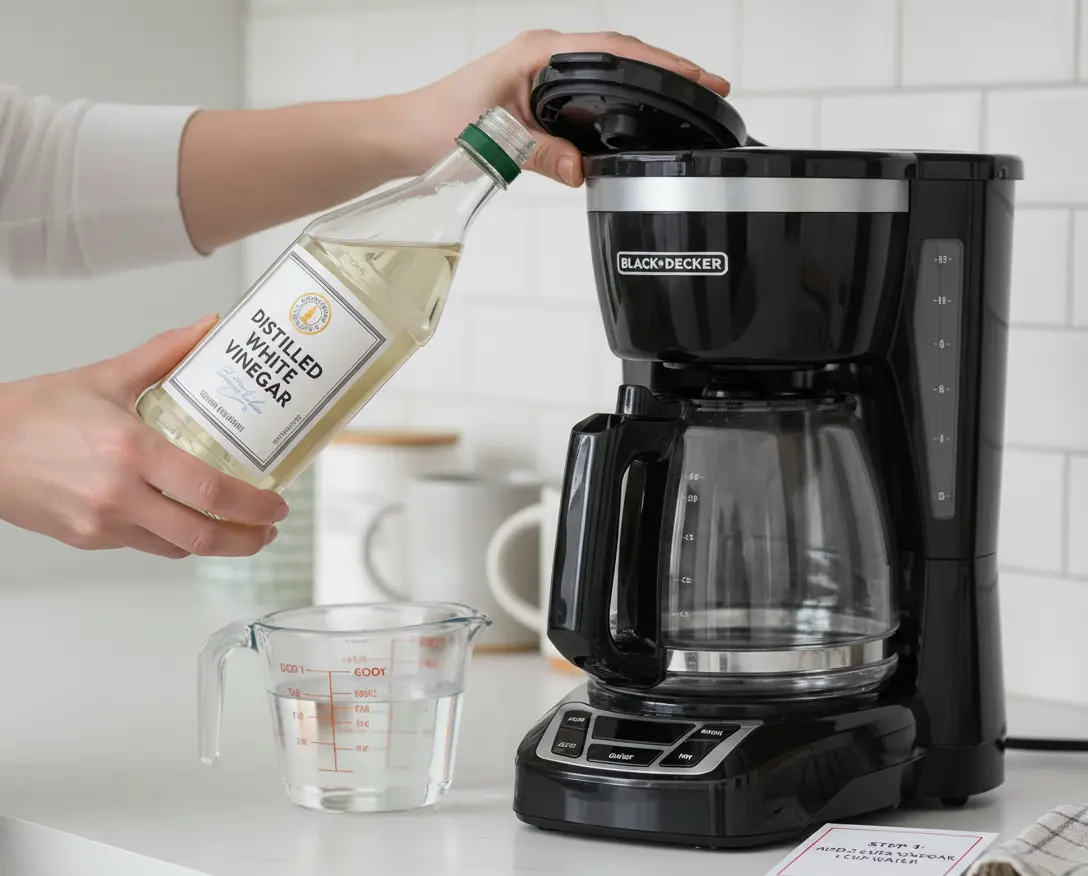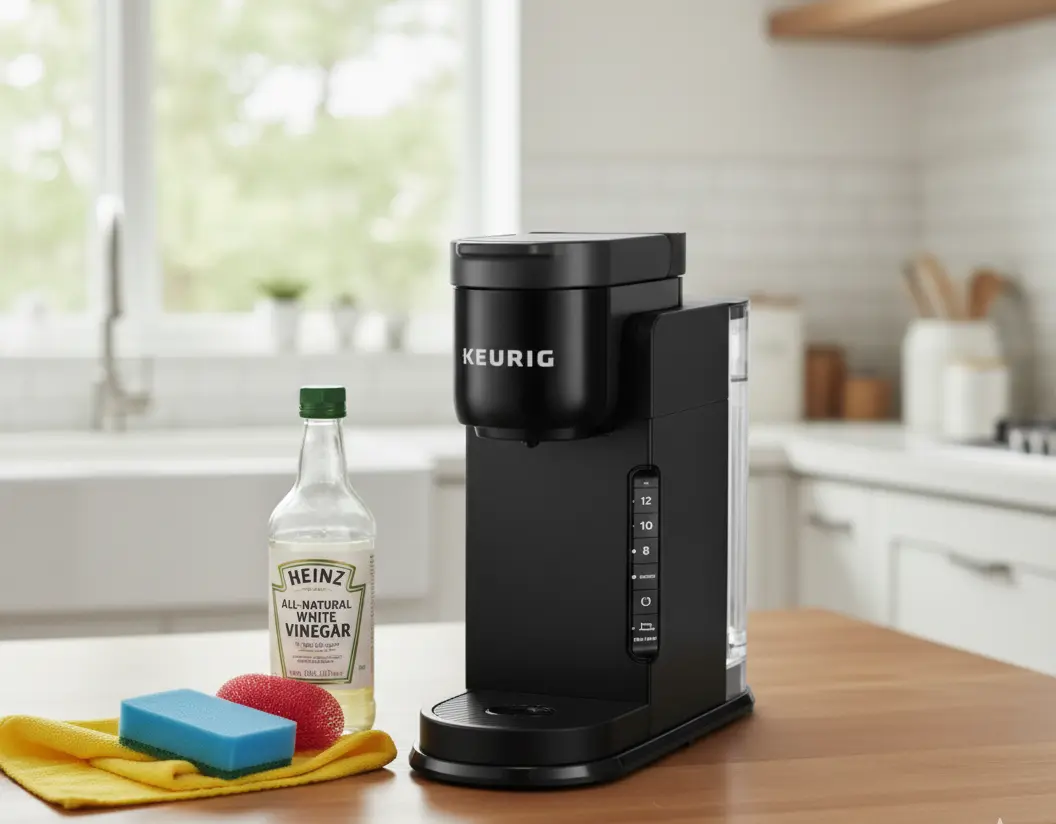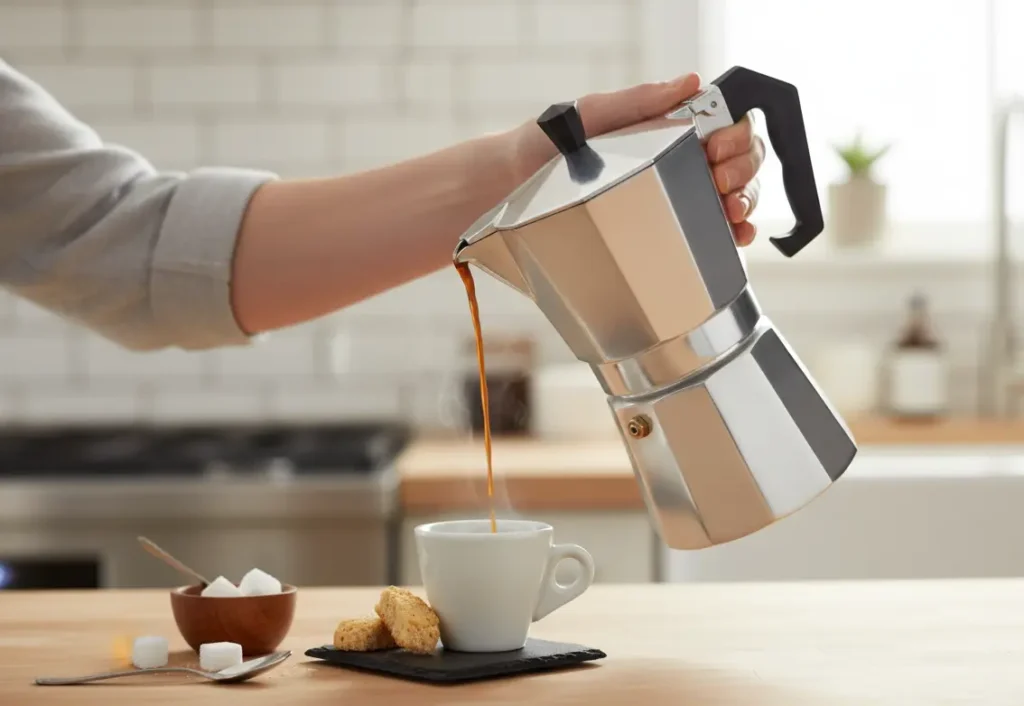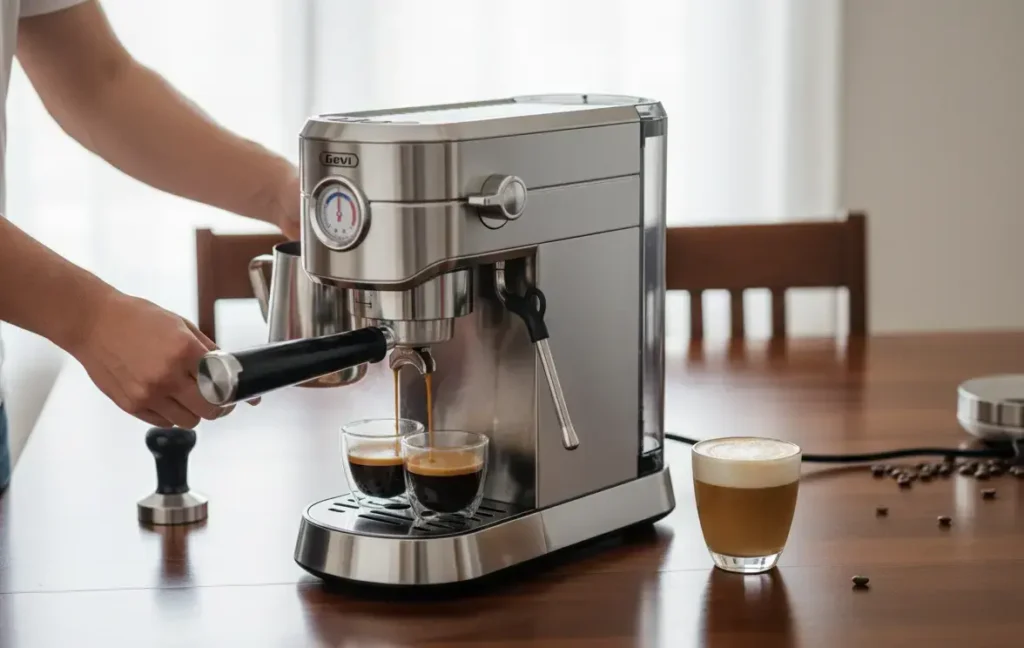You rely on your coffee maker every morning to kickstart your day with that perfect cup of coffee. But have you ever thought about how often you should clean it?
Over time, mineral buildup and coffee oils can affect the taste and performance of your machine. Cleaning your coffee maker with vinegar is a simple, effective way to keep it fresh and working smoothly. But how often should you do it to get the best results without wasting time?
You’ll discover the ideal cleaning schedule, easy steps to follow, and tips to make your coffee taste better than ever. Keep reading to learn how to keep your coffee maker in top shape with just a little vinegar and water!

Why Clean Your Coffee Maker
Mineral buildup from hard water can clog your coffee maker. This buildup reduces water flow and heats unevenly. Over time, it affects the taste and aroma of your coffee, making it bitter or dull. Cleaning with vinegar removes these deposits effectively. Regular cleaning helps keep your machine working well. It also extends the life of your coffee maker by preventing damage. Neglecting cleaning can cause costly repairs or replacement. A clean machine brews coffee that tastes fresh and rich every time.
Vinegar As A Cleaning Agent
Vinegar is a natural cleaning agent that helps remove mineral buildup in coffee makers. Its acidic nature breaks down limescale and coffee residue effectively. This makes vinegar a popular choice for cleaning.
Using vinegar is also safe for your coffee maker when done correctly. It does not leave harmful chemicals behind. After cleaning, run several cycles of plain water to rinse out any vinegar taste. Experts at Consumer Reports emphasize that proper rinsing is just as important as the cleaning cycle
Vinegar’s ability to cut through buildup and its safety make it a trusted option. Just remember to rinse well to keep your coffee tasting fresh.
Cleaning Frequency
Cleaning your coffee maker once a month helps keep it working well. Vinegar removes heavy mineral deposits that build up inside. These minerals can block the machine and change the taste of your coffee.
Signs you need cleaning include slower brewing, strange smells, or bad taste. If you see white or crusty buildup, clean it more often. Running a vinegar solution twice can help if deposits are heavy.
Regular monthly maintenance with vinegar keeps your coffee fresh and your machine healthy. Remember to run two or three cycles of plain water after vinegar to rinse away any leftover taste.
Step-by-step Cleaning Process
Mix equal parts of white vinegar and water in the coffee maker’s reservoir. Use fresh vinegar each time you clean for best results.
Place a paper filter in the basket and start a brew cycle. This lets the vinegar solution run through the machine.
Pause the brew cycle halfway and let the vinegar soak for about an hour. This helps remove mineral buildup.
After soaking, resume and complete the brew cycle. Discard the vinegar solution once brewing finishes.
Run two to three cycles of plain water to rinse out vinegar taste and smell. Use fresh water each cycle.
Remove and clean all detachable parts like the basket and carafe with warm, soapy water. Dry them before reassembling.
Tips For Effective Cleaning
Use a mix of equal parts vinegar and water for cleaning. For strong buildup, reduce vinegar to half the amount. This avoids a too strong smell and taste. After cleaning, run two to three rinse cycles with plain water. This removes any vinegar residue. If vinegar smell lingers, add one more rinse cycle.
Avoid skipping rinses to keep coffee taste fresh. Let the vinegar solution sit in the machine for about an hour during cleaning. This helps break down mineral deposits inside. Adjust vinegar concentration based on how dirty the machine is. Use more water for light cleaning and more vinegar for tough stains.
:max_bytes(150000):strip_icc()/clean-coffee-maker-with-vinegar-1907384-Final-e47a97b1dd8e4e8a9d3655cf9e87e9c6.jpg)
Credit: www.thespruce.com
Alternatives To Vinegar
Commercial descaling products are made to remove mineral buildup fast. They often work better than vinegar for tough stains. These products are easy to use and come with clear instructions. Some contain chemicals that are safe for coffee machines but should be handled with care.
Natural alternatives include lemon juice and baking soda. Lemon juice is slightly acidic and can help break down minerals. Baking soda can freshen and clean the machine without harsh chemicals. Both are gentle and safe for regular cleaning.
| Type | Benefits | Considerations |
|---|---|---|
| Commercial Descalers | Fast, effective, easy to use | May contain chemicals, follow instructions |
| Lemon Juice | Natural, mild acid, safe | May leave a citrus scent |
| Baking Soda | Freshens, cleans gently | Needs thorough rinsing |
Common Mistakes To Avoid
Overusing vinegar can damage your coffee maker’s parts and leave a strong smell. Use vinegar only as recommended, usually once a month. Skipping rinse cycles is a common mistake that leaves vinegar taste in your coffee. Always run at least two or three cycles with plain water after cleaning.
Ignoring removable parts like the filter basket or carafe can cause buildup. These parts need to be cleaned separately with soap and water. Cleaning all parts regularly keeps your coffee fresh and your machine working well.

Frequently Asked Questions
How Many Times Should I Run Vinegar Through My Coffee Maker?
Run vinegar through your coffee maker once for regular cleaning. For heavy buildup, run it twice. Always follow with two to three water cycles to rinse thoroughly. Clean monthly to maintain taste and performance.
Is It Safe To Clean Your Coffee Maker With Vinegar?
Yes, cleaning a coffee maker with vinegar is safe. Use equal parts vinegar and water. Run one brew cycle, then rinse twice with water. This removes mineral buildup effectively without harming the machine.
What Happens If You Don’t Descale Your Coffee Maker?
Not descaling leads to mineral buildup, reducing coffee flavor and machine efficiency. It may cause clogs and damage.
What Are Common Coffee Maker Cleaning Mistakes?
Common coffee maker cleaning mistakes include using too much vinegar, skipping rinsing cycles, neglecting removable parts, and cleaning too infrequently. Avoid harsh chemicals and never immerse the machine in water. Regular, proper cleaning ensures better taste and machine longevity.
How Often Should You Clean Coffee Maker With Vinegar?
Clean your coffee maker with vinegar about once a month to remove mineral buildup and improve taste.
Conclusion
Cleaning your coffee maker with vinegar once a month keeps it fresh. Run one vinegar cycle, then two or three water cycles. This removes buildup and improves coffee taste. For heavy deposits, repeat the vinegar cycle twice. Regular cleaning helps your machine last longer.
It also prevents bad odors and clogs. Simple steps make the process easy and quick. Clean coffee makers brew better coffee every day. Don’t wait until problems show—clean on schedule. Your coffee deserves a clean machine.

Hi, I’m Joshua Miller, a U.S.-based food lover, review writer, and Co-founder of KitchenWink.com. I hold a Bachelor of Science in Food Science and Culinary Technology, and for over five years I’ve been testing kitchen gadgets like air fryers, blenders, and other cooking tools.
I’m also a home cook, so every product I review is tried in real kitchens—not just in theory. My reviews are based on real results, simple fixes, and tips that anyone can use. With both formal training and hands-on testing, I make sure my advice is clear, honest, and practical.
My goal is simple: to help home cooks choose the right tools and make cooking easier every day.




